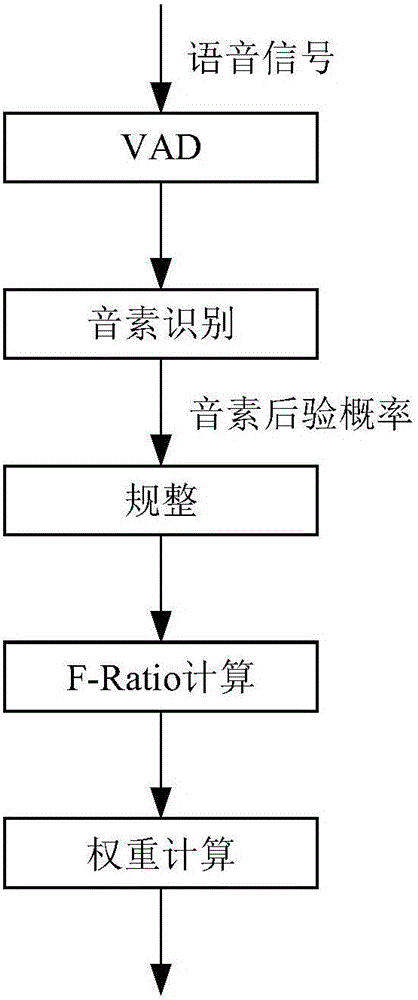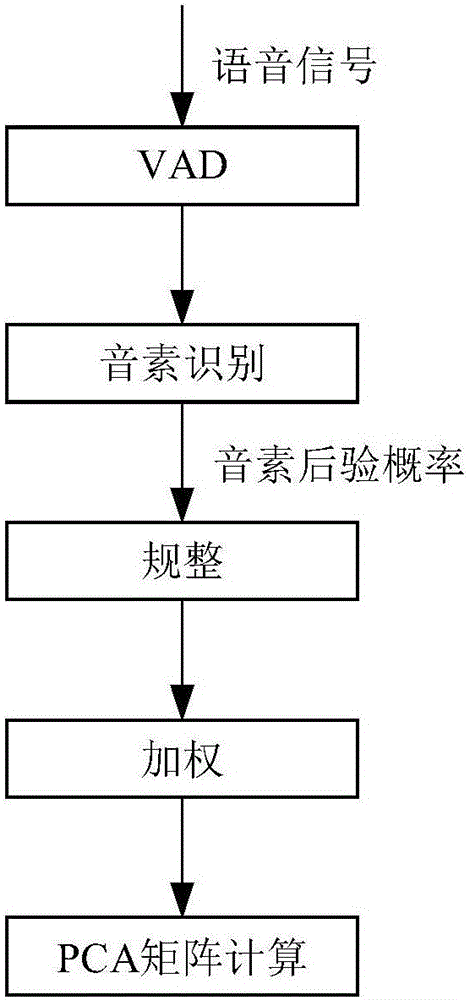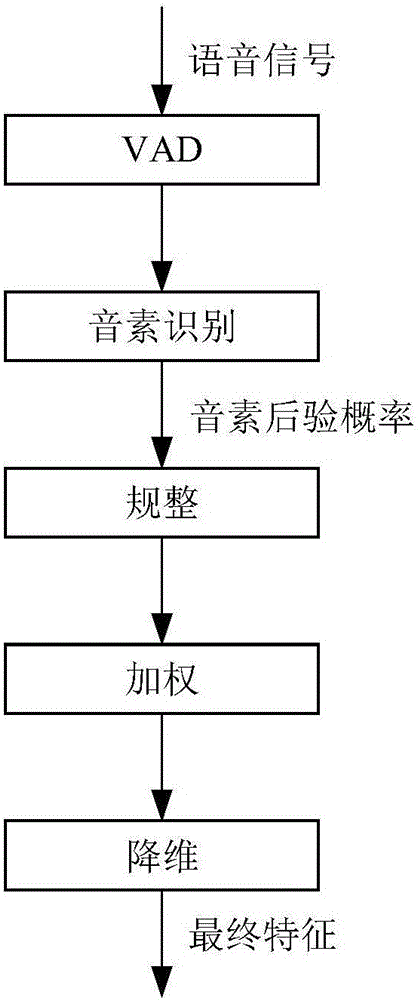Discriminative feature extraction method applied to language identification
A technology of feature extraction and language recognition, which is applied in speech recognition, speech analysis, instruments, etc., and can solve problems such as different language discrimination of different phonemes
- Summary
- Abstract
- Description
- Claims
- Application Information
AI Technical Summary
Problems solved by technology
Method used
Image
Examples
Embodiment Construction
[0056] The present invention will be further described now in conjunction with accompanying drawing.
[0057] The discriminative feature extraction method of the present invention includes two stages, one is a training stage and the other is a testing stage. The work to be done in the training phase is to use the speech data in the training set to calculate the F-ratio index (F-Ratio) and use the speech data in the training set to train the PCA (Principal Component Analysis) matrix. The work to be done in the test phase is: use the F-Ratio index and PCA matrix obtained in the training phase to extract the features of the speech to be tested, and the extracted features are language discriminative.
[0058] The work to be completed in the training phase and the testing phase will be described respectively below.
[0059] 1. Training stage
[0060] Assuming that there are data of M languages in a training set, and each language has N sentences (the number of sentences in each...
PUM
 Login to View More
Login to View More Abstract
Description
Claims
Application Information
 Login to View More
Login to View More - R&D
- Intellectual Property
- Life Sciences
- Materials
- Tech Scout
- Unparalleled Data Quality
- Higher Quality Content
- 60% Fewer Hallucinations
Browse by: Latest US Patents, China's latest patents, Technical Efficacy Thesaurus, Application Domain, Technology Topic, Popular Technical Reports.
© 2025 PatSnap. All rights reserved.Legal|Privacy policy|Modern Slavery Act Transparency Statement|Sitemap|About US| Contact US: help@patsnap.com



